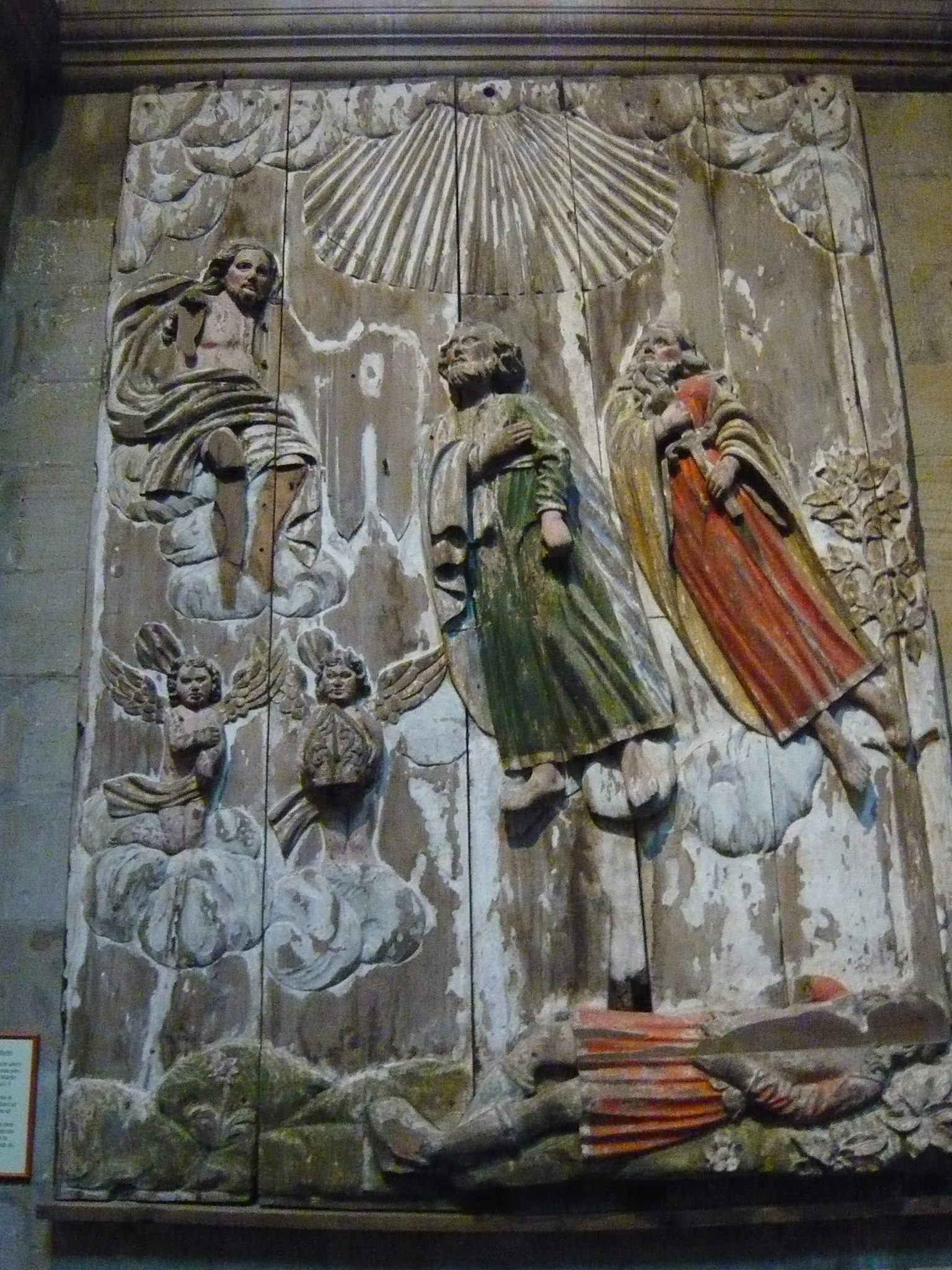La ville de Figeac abritait une église Saint-Martin détruite durant la Révolution. Cette église aurait possédé un panneau représentant Le Songe de saint Martin. Cette sculpture de bois peint aurait échappé à la destruction de l’église et se trouve dans l’église Saint-Sauveur.
Ce bas relief est un grand panneau de bois peint (noyer polychrome) de 3,80 m de haut x 2,05 m de large. Le panneau situé dans le bas côté sud de la nef représente sur la partie inférieure, saint Martin vêtu de sa tunique rouge (armée romaine), qui est endormi dans un pré fleuri.
Sur la partie supérieure nous voyons le rêve à savoir : apparition du Christ, assis sur un nuage (siège) avec sur son bras le manteau que saint Martin a donné au mendiant avec à sa droite saint Pierre de vert et saint Paul de rouge également qui tient dans ses mains une épée. On peut voir deux anges sur la gauche portant les attributs du futur évêque de Tours (celui de droite tient une mitre dans ses mains). Nous voyons tout en haut du panneau des nuages d’où sort une lumière céleste représentant la présence de Dieu.
The town of Figeac had a church of Saint Martin which was destroyed during the Revolution. This church is said to have had a panel representing the Dream of Saint Martin. This painted wood sculpture escaped the destruction of the church and is now in the church of Saint-Sauveur.
This bas-relief is a large painted wood panel (polychrome walnut) measuring 3.80 m high x 2.05 m wide. The lower part of the panel in the lower south side of the nave shows Saint Martin in his red tunic (Roman army), who is asleep in a flowery meadow.
On the upper part we see the dream, i.e. the appearance of Christ, sitting on a cloud (seat) with the cloak that St Martin gave to the beggar on his arm, with St Peter in green and St Paul in red, who is holding a sword in his hands. Two angels can be seen on the left carrying the attributes of the future bishop of Tours (the one on the right holds a mitre in his hands). At the top of the panel we see clouds from which a heavenly light emerges, representing the presence of God.

 "/>
"/>